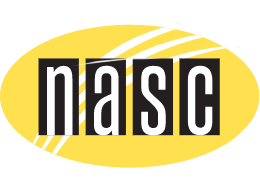Types Of Cysts On Dogs

Has a fluid-filled lump on your dog got you worried?
Chances are, it’s a cyst.
But what exactly is a cyst? Is it dangerous … and what are the different types of cysts on dogs?
Large Fluid-Filled Lump On Dog: What Does It Mean?
That fluid-filled lump on your dog is likely a cyst … but what does that mean? And is it something to worry about?
A cyst is a sac-like structure that can be found on or under a dog’s skin. It’s usually filled with fluid, air, or semi-solid material. Cysts can vary in size, shape, and location on a dog’s body, and they can be benign or malignant.
Benign cysts are the more common type of cysts found on dogs and are usually not harmful. They can develop for a variety of reasons, such as blocked hair follicles or an overproduction of cells. These cysts are typically small, slow-growing, and don’t usually cause your dog any pain or discomfort..
Malignant cysts are much less common but are a more serious concern. Malignant cysts can be cancerous and can spread to other parts of the dog’s body if untreated.
What Do Cysts On Dogs Look Like?
Cysts on dogs can have different appearances depending on their location and whether they’re benign or malignant.
Benign cysts tend to look like smooth, round, or oval-shaped bumps on a dog’s skin. They can be small or large, and may or may not be discolored. Benign cysts are usually painless, but may grow over time if left untreated.
Malignant cysts usually have irregular borders or shapes, and may be accompanied by other symptoms like bleeding or ulceration. Malignant cysts can also grow rapidly and invade nearby tissues, which can be dangerous.
The 5 Different Types Of Cysts On Dogs
Cysts can be a cause for concern for dog owners, but as mentioned earlier, most types of cysts on dogs are harmless and don’t require treatment.
Here are the five different types of cysts that can develop on dogs and what you need to know about each:
- True Cyst: This type of cyst is lined with cells and contains fluid. True cysts are usually harmless and don’t require treatment unless they become infected or inflamed. They may appear as a small, round bump under the skin.
- False Cyst: A false cyst is a collection of fluid that is not lined with cells. They can be caused by trauma or injury and are usually benign. False cysts may appear as a soft, squishy lump under the skin.
- Follicular Cyst: Follicular cysts develop from hair follicles and can occur anywhere on a dog’s body. They may look like small, round bumps that can become infected or inflamed. While they are usually benign, it’s important to monitor them for changes.
- Sebaceous Cyst: Sebaceous cysts are the most common type of cyst on dogs. They develop from blocked oil glands and can appear anywhere on the body. Sebaceous cysts can become infected or inflamed, but they are usually harmless. They may appear as a small, raised bump under the skin. Don’t be tempted to squeeze cysts yourself as that could cause infection.
- Dermoid Cyst: This type of cyst is rare but can occur in dogs. Dermoid cysts are made up of tissue that should not be present, such as hair, teeth, or bone. They may appear as a small bump under the skin and are usually benign, but it’s important to monitor them for changes.
RELATED: Learn more about common types of lumps on dogs …
What To Do If Your Dog Has A Cyst
It can be difficult to tell the difference between benign and malignant cysts just by looking at them.
And while some cysts may not require treatment, others may need to be surgically removed if they’re causing discomfort or interfering with your dog’s movement.
So … if your pup has a cyst, it’s usually best to err on the safe side and get him examined by a veterinarian to determine the best course of action. And if you see any new or changing cysts on your dog, see your vet as soon as possible.
Should You Remove A Cyst?
If the cyst is benign, there’s no need to remove it unless it’s in a place where it bothers your dog, interfering with movement or bodily functions.
If your vet thinks the cyst may be malignant, you may want to get it removed. After removal, your vet can test the lump to confirm the diagnosis. It’s best to avoid needle biopsies and aspirations as these can disrupt cancer cells and could cause them to spread.
Cyst On Dog Paws
Cysts can occur on any part of a dog’s body, including their paws. In fact, paw cysts are relatively common in dogs, and they can be caused by a variety of factors, such as allergies, injuries, or infections.
The most common types of cysts on a dog’s paw are follicular cysts and sebaceous cysts.
Fortunately, most paw cysts are benign and don’t pose a threat to your dog’s health. But it’s still important to keep an eye on any cysts that appear on your dog’s paw and monitor them for changes in size or appearance.
If you notice any signs of infection or inflammation, such as redness, swelling, or discharge, or if your pup is having trouble walking on his paw … get your vet’s advice.
If your dog has a paw cyst that’s not causing any discomfort or other symptoms, your vet may recommend a “watch and wait” approach. In that case, they’ll advise you to simply monitor the cyst and only seek treatment if it grows larger or becomes inflamed.
RELATED: How to manage interdigital cysts in dogs …
How To Drain A Cyst On A Dog
If the cyst is causing your dog pain or discomfort, your vet may recommend draining it or surgically removing it. Don’t try to drain or remove the cyst yourself at home, as this can cause the cyst contents to spread into spread the cyst contents into the surrounding tissues. According to the Merck Veterinary Manual, your dog’s body will react to the cyst contents as a foreign substance, leading to severe inflammation.
What To Do About A Ruptured Cyst On A Dog
So what if your dog’s cyst has already ruptured? In that case, you’ll wantt to take action quickly to prevent infection and further complications.
The first step is to clean the affected area thoroughly with warm water and mild soap. If there is any discharge, gently remove it with a clean cloth or gauze.
After cleaning, keep the affected area dry and monitor it closely for signs of infection, such as redness, swelling, or discharge. If you notice any of these signs or if your dog seems to be in pain or discomfort, it’s best to take him to the vet, in case the ruptured cyst needs to be removed.
How To Prevent Cysts In Dogs
Here are some tips for preventing cysts in dogs:
-
Regular Grooming
Regular grooming is essential for your dog’s skin and coat health. Brushing your dog’s coat regularly can help remove dead skin cells and prevent buildup of oil and dirt, which can contribute to the development of cysts. Don’t overbathe your dog, as that can deplete the natural oils that keep skin healthy.
-
Keep Skin Dry
Moisture and bacteria can contribute to the development of cysts, so it’s essential to keep your dog’s skin clean and dry. Be sure to dry your dog thoroughly after baths or swimming.
-
Monitor Lumps And Bumps
Regularly check your dog’s skin for any lumps or bumps. If you notice any changes, take your dog to the vet for a checkup. This can also help you detect mre serious problems like tumors or swollen lymph nodes.
-
Avoid Skin Injury
Sometimes cysts develop after trauma or injury to the skin. Let your dog be a dog and don’t spoil his fun by stopping these activities … but you may want to keep an eye on his skin after rough play or running through dense or prickly vegetation.
-
Support The Immune System
A healthy immune system can help to prevent development of cysts. So provide your dog with a healthy diet, regular exercise, and plenty of fresh water to keep his immune system in top shape.
Most dog cysts aren’t harmful, but it’s still a good idea to prevent them if you can!




